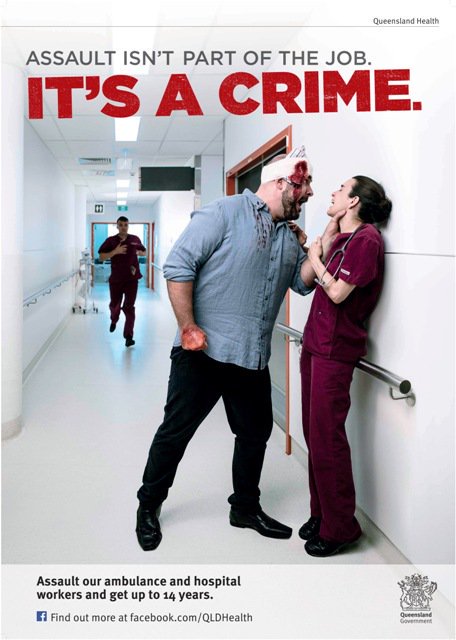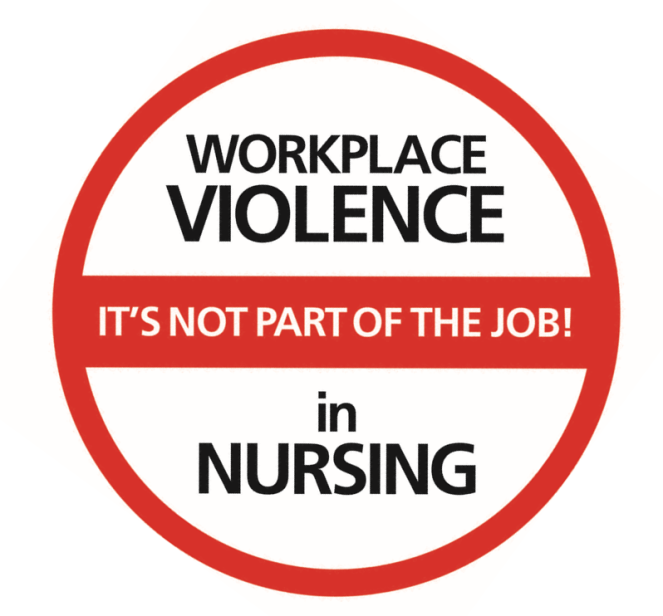Not Just Physicians
Although I say physicians in the title (because that is just what I am highlighting today), the real issue is violence against healthcare workers. I have ready various estimates, but this Medscape article states that almost 75% of assaults that occur in the workplace involve healthcare workers. Unfortunately I can’t say that this surprises me, I have ready many reports that almost all nurses will face some sort of violence or threat of violence during their careers. I would shudder to think what answer I would get if I posed this question to my colleagues over the years. I have seen it for myself – almost always in the emergency department, but those were just the most blatantly violent situations (watching someone with a gun getting tackled does not inspire confidence while you are at work). It’s also the more subtle incidents – verbal assaults, getting food thrown at you. I have sadly experienced both over the course of my training and career – and again, I can only imagine how much more often this happens to nurses and CNA’s and other personnel that are on the “front line”, so to speak. As a surgeon I am away from the floor most of the day – but I hear what goes on. The same thing occurs in the office. Putting on a good show during rounds or while I am in the room, but disrespecting hospital or office staff when my back is turned is just as bad if not worse than doing it to me. This type of behavior leads to animosity on all fronts and this slow burn eventually boils over – like when Boston cardiac surgeon Dr. Michael Davidson was shot and killed by a disgruntled family member of a patient.
A Lynch Mob in India
When a physician is murdered in cold blood at his hospital in Boston, its global news (and I certainly mean no disrespect here, that event was unspeakable and should never be normalized). But what happens when a lynch mob assaults an intern doctor in India? Well I have yet to see any significant western media cover this. It is somewhat difficult to ascertain exactly what happened, but the gist of it is that a critically ill 75 year old patient died, and family/friends assaulted the intern doctor that they felt was responsible – leading to a skull fracture and head injury that required surgery to address (the physician is recovering well per report). Currently there are strikes and sit-ins planned, not just among fellow trainees, but now the Indian Medical Association is calling for a strike tomorrow (6/14) – which would shutter the outpatient departments of government hospitals around the country.
I get so many emails each day with medical news. Some general, some specific to my profession. But as of yet I have not seen this mentioned once. How did I even find out about this? On social media, on Reddit of all places – in the Medicine subreddit. I have many colleagues that I have interacted with over the years who are from India, or who still work in India. Just because this isn’t happening in Europe or the US doesn’t mean that we can just ignore this as a medical community. It would appear as though the Indian Minister’s response to this crisis has not been well received by Indian doctors either. As healthcare workers we need to stand united. Regardless where this type of behavior occurs, we need to provide a united front that this type of behavior is not acceptable. While I can’t say that I am the biggest fan of the Joint Commission, they do have a nice infographic on this issue.
Not the First Time, and Not the Last
In April of 1788 what eventually become known as the “Doctor’s Riot” transpired in New York City. A mob descended upon New York Hospital wanting the blood of Columbia College medical students and faculty because of an apparent grave robbing of a white woman. In those days grave robbing was essentially the only way to obtain cadavers for dissection – one of the cornerstones of teaching in 18th century medicine. Often the bodies belong to poor, black individuals and society turned a blind eye to it – but in this case a mob instead descended upon the hospital. In the end an estimated 20 people were killed during the riot and doctors and students had to be escorted to a jail in order to be kept safe after the governor called in the militia.
While the “Doctor’s Riot” may be far removed from current violence against healthcare workers, it is emblematic of an underlying problem. In all of these cases I believe that a lack of communication and understanding is the central issue. In saying this I by no means am trying to talk down to patients or families, but the same issues still existed over 200 years ago. The understanding of science and medicine is an undertaking that requires years of study, and as a result there will always be in imbalance of knowledge and as a result of perceived power. As healthcare providers we can always make more of an effort to communicate what we know to our patients (and families) and do so in a way that not only makes sense to them, but is meaningful. We need to take the initiative to bridge the gap that exists. At the same time, there cannot be any tolerating of violence against any healthcare workers – and more than anything this needs to be reflected in behavior from management. In the end everyone wants the same thing – and everyone benefits from a good outcome.
We are all on the same team – we just need to act like it.


